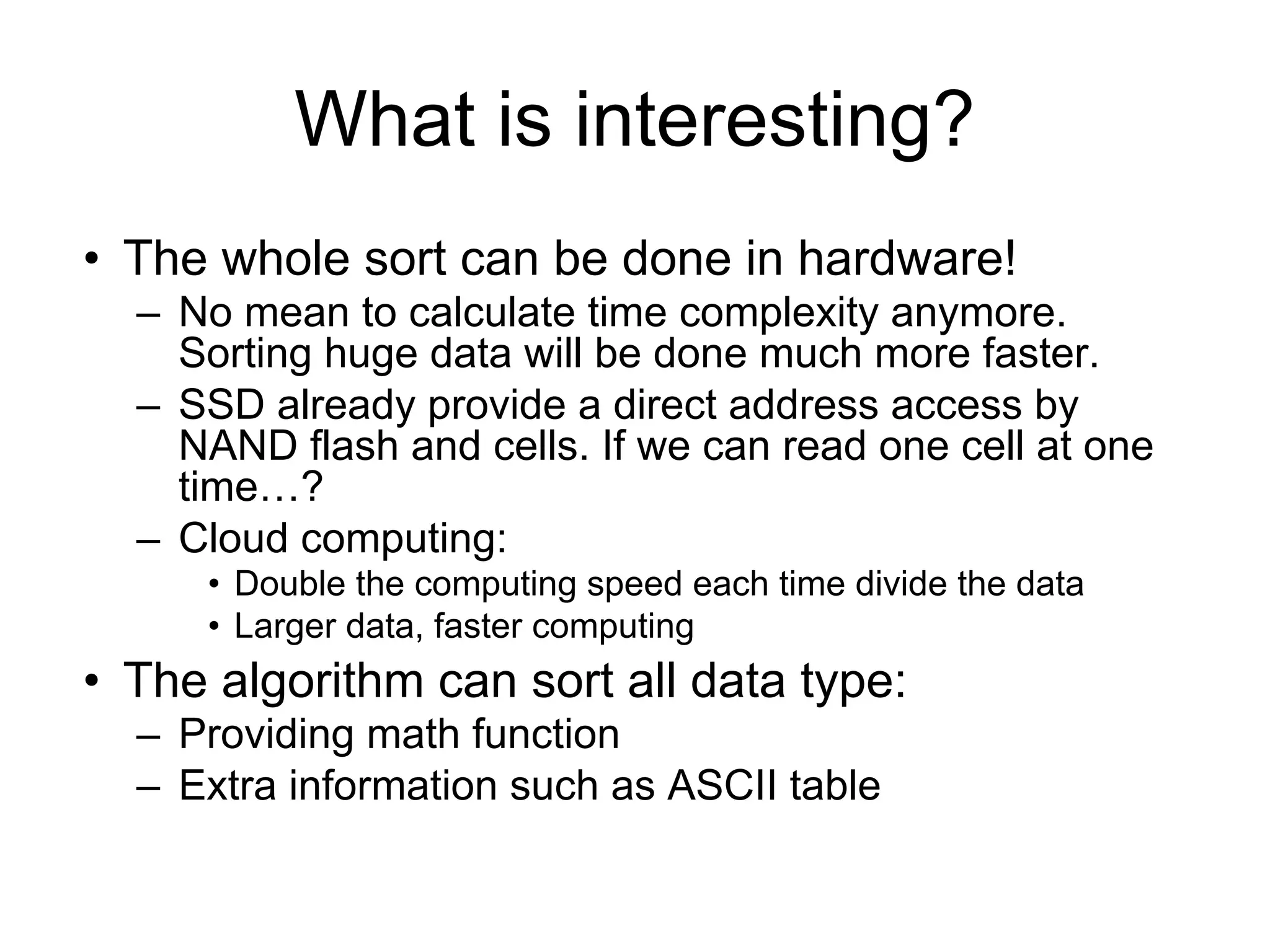This document describes the binary sort algorithm, a non-comparison sorting algorithm that sorts data by examining bits of information one bit at a time from most significant to least significant. It has a time complexity of O(kn) where k is the number of bits in each data item and n is the number of items. The algorithm works by recursively sorting subsets of the data based on the value of each bit, placing 0s in one group and 1s in another. It is an in-place, linear sorting algorithm.
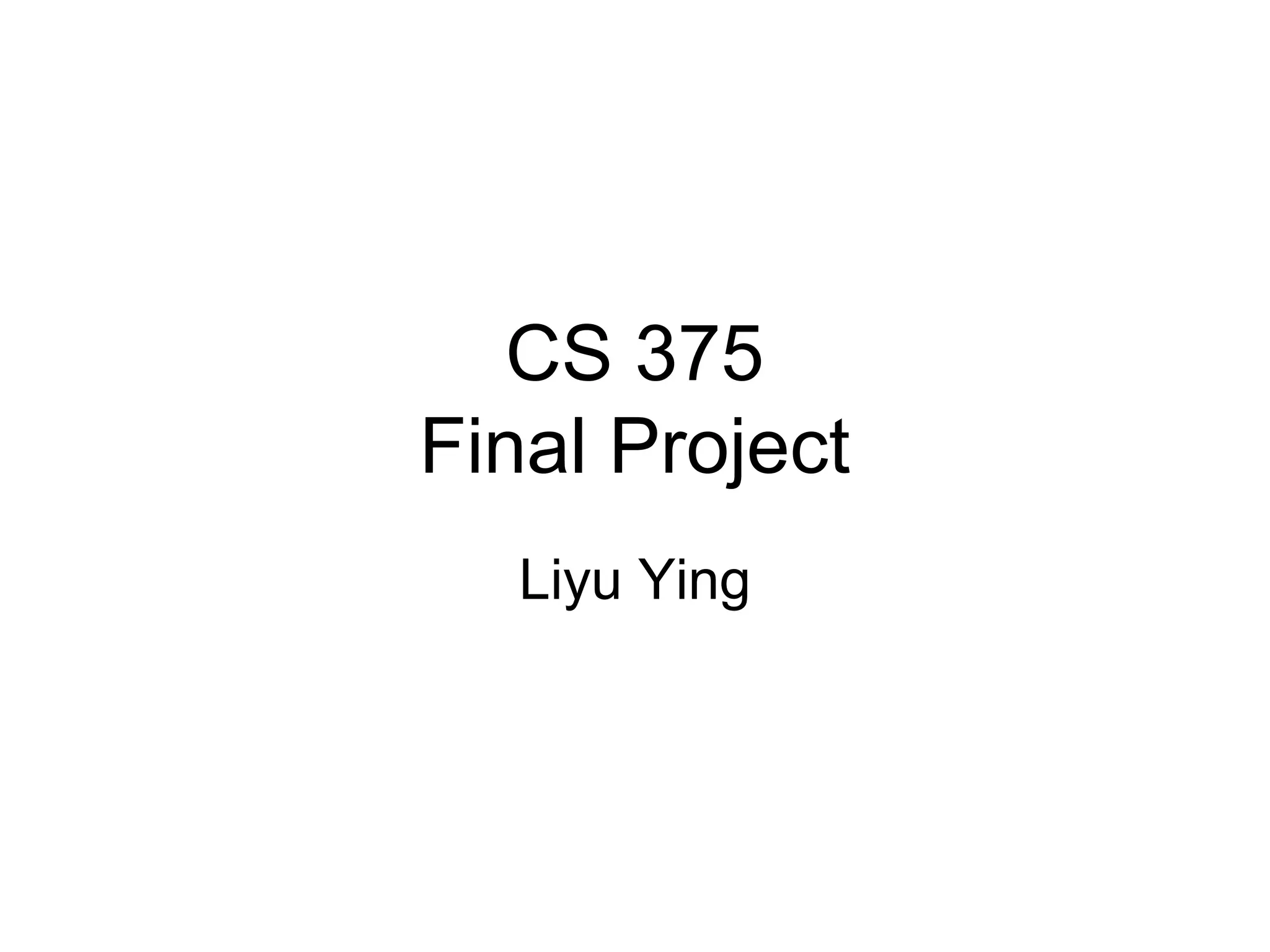

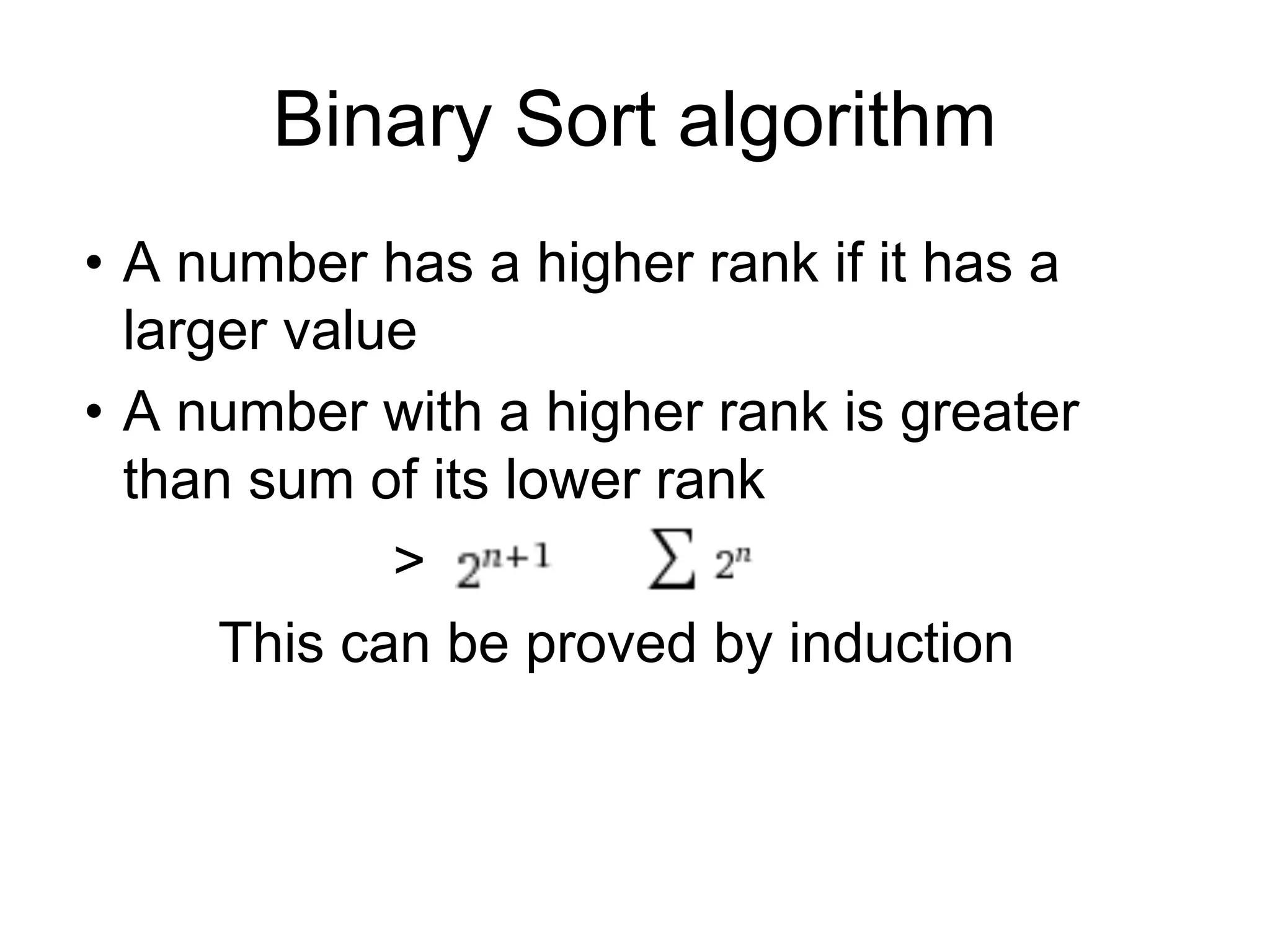
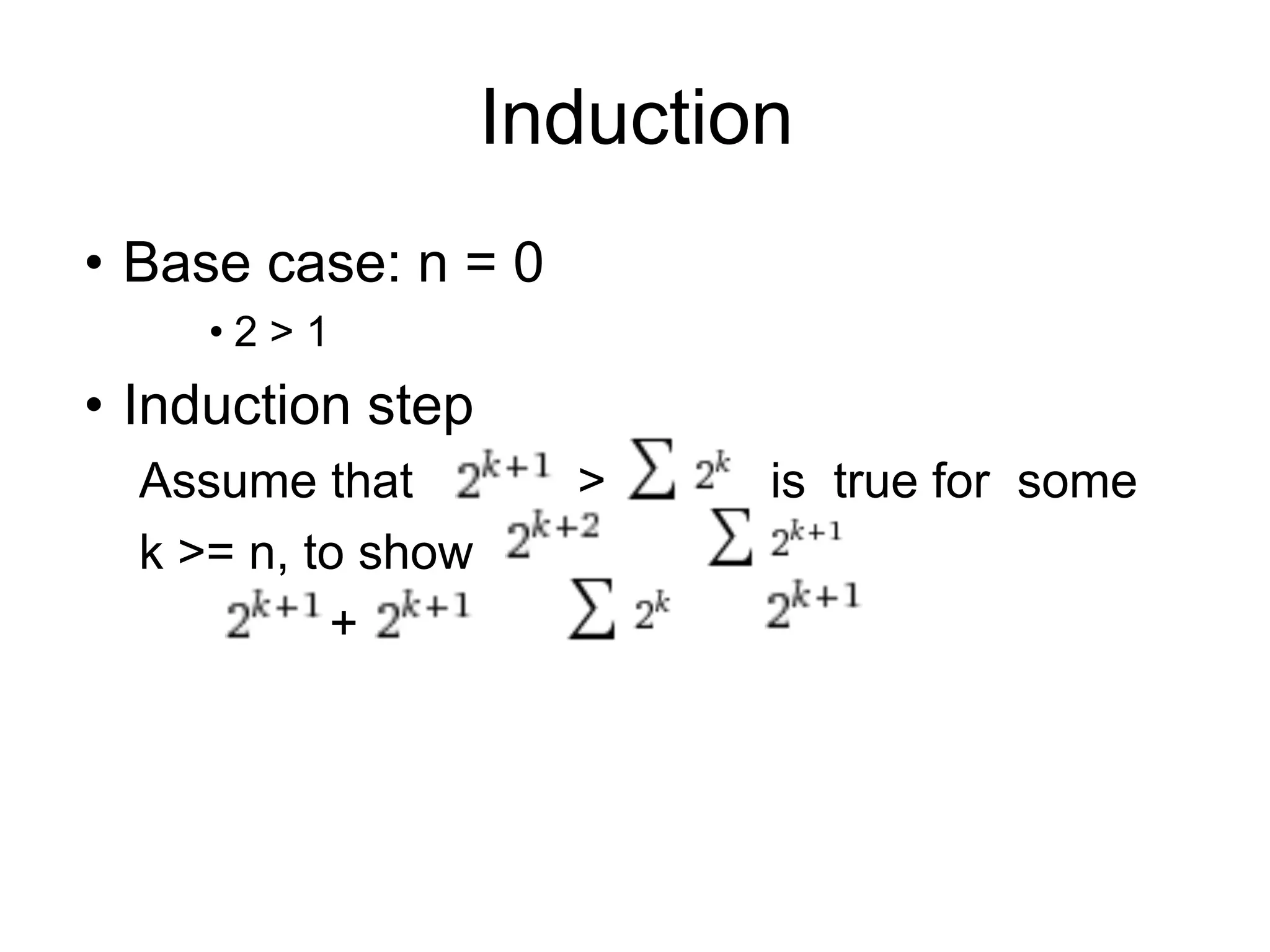
![Pseudocode
binarySort (leftIndex, rightIndex, currentBit)
int I = leftIndex, j = rightIndex
while (i <= j) {
//find first data with value 0 at currentBit, starting from left
while (data[i] & currentBit)
i++;
//find first data with value 1 at currentBit, starting from right
while (!(data[j] & currentBit))
j--;
if (i < j) {
swap data[i] and data[j]
}
}
nextBit = currentBit >> 1;
if (nextBit) {
binarySort(LeftIndex, i - 1, nextBit);
binarySort(j, rightIndex, nextBit)
}](https://image.slidesharecdn.com/8a2c49a2-d12b-4d9e-ab36-d6d93d832d60-150418184825-conversion-gate02/75/CS375-Presentation-binary-sort-pptx-5-2048.jpg)
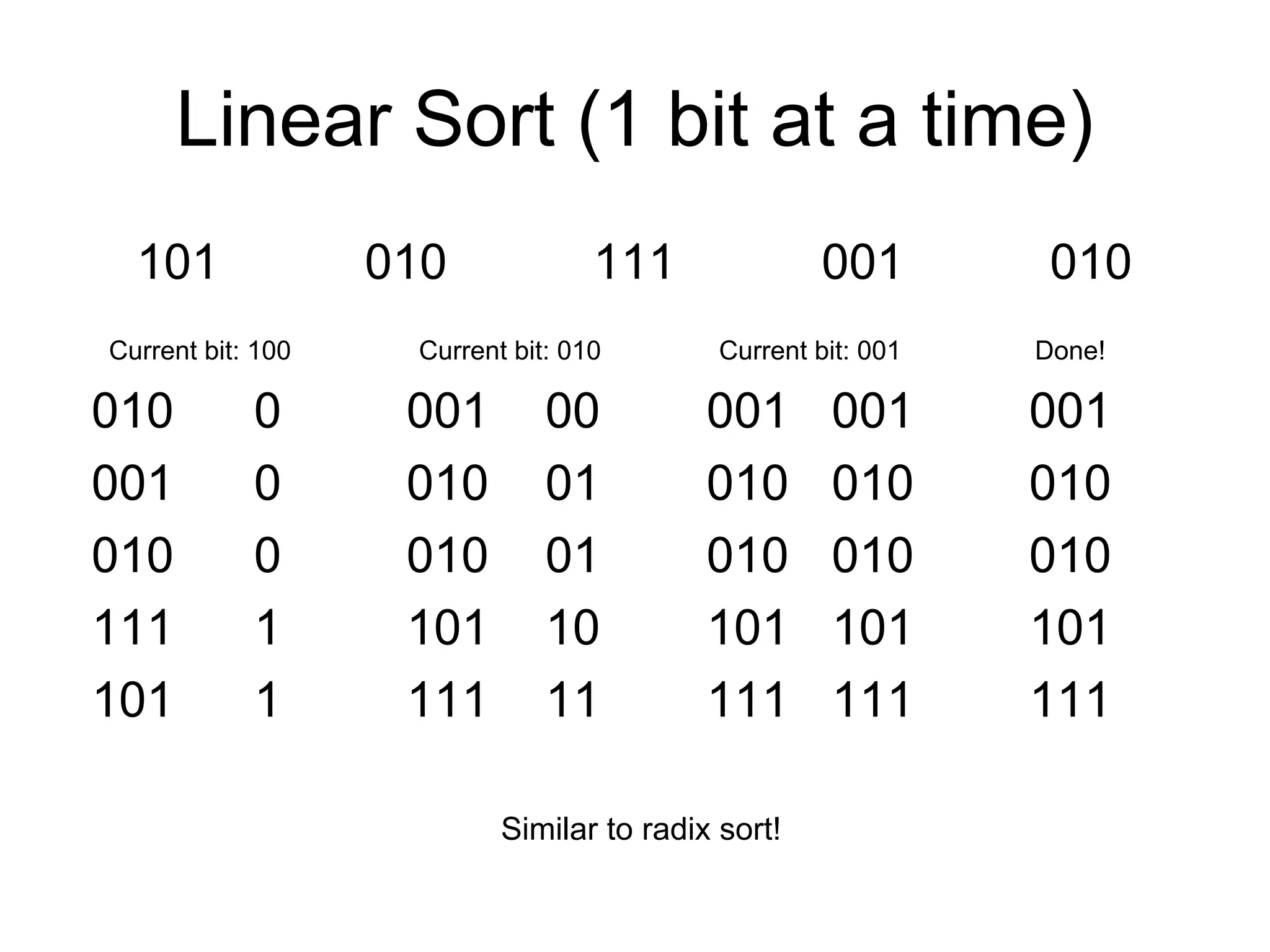
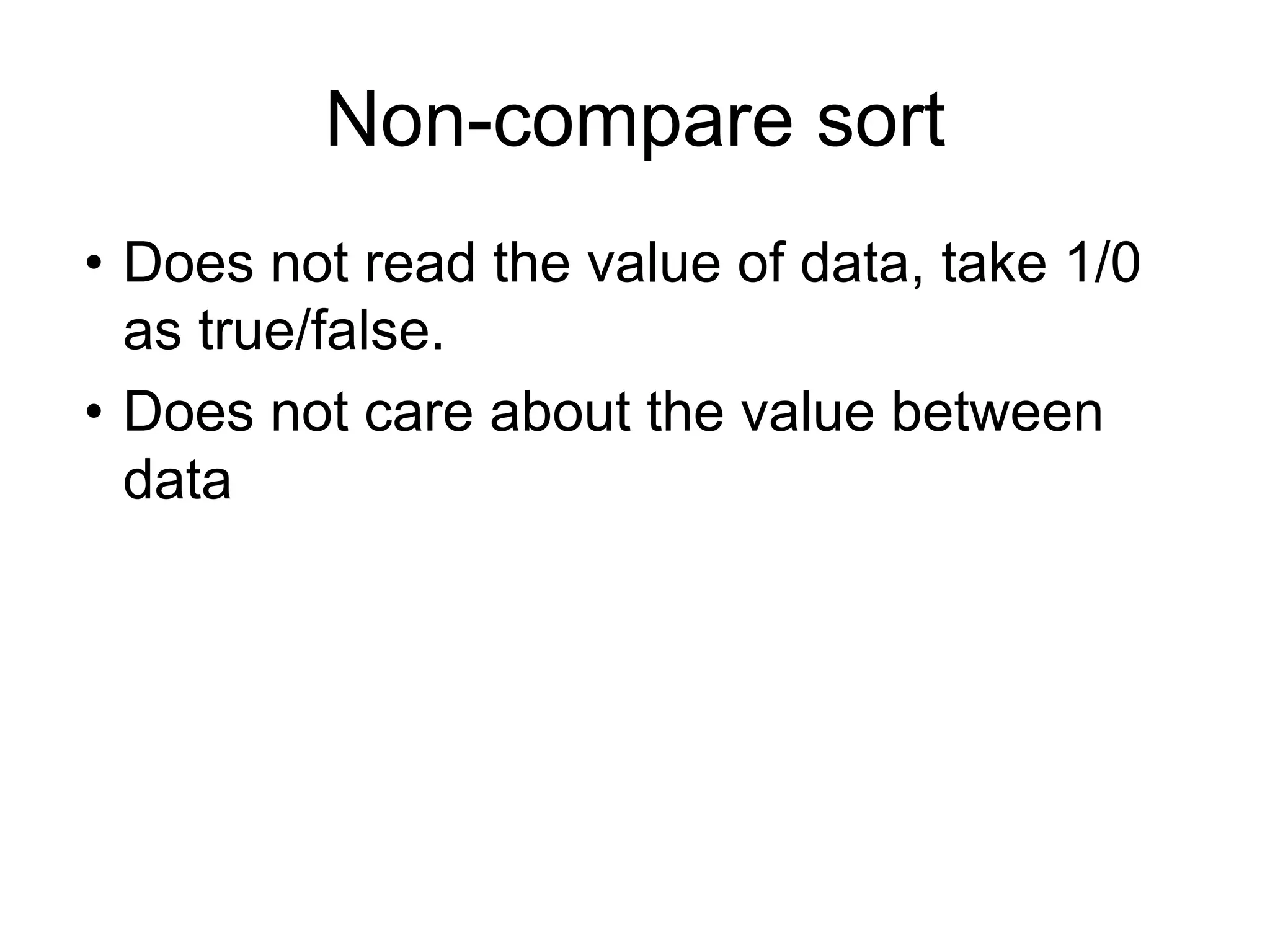
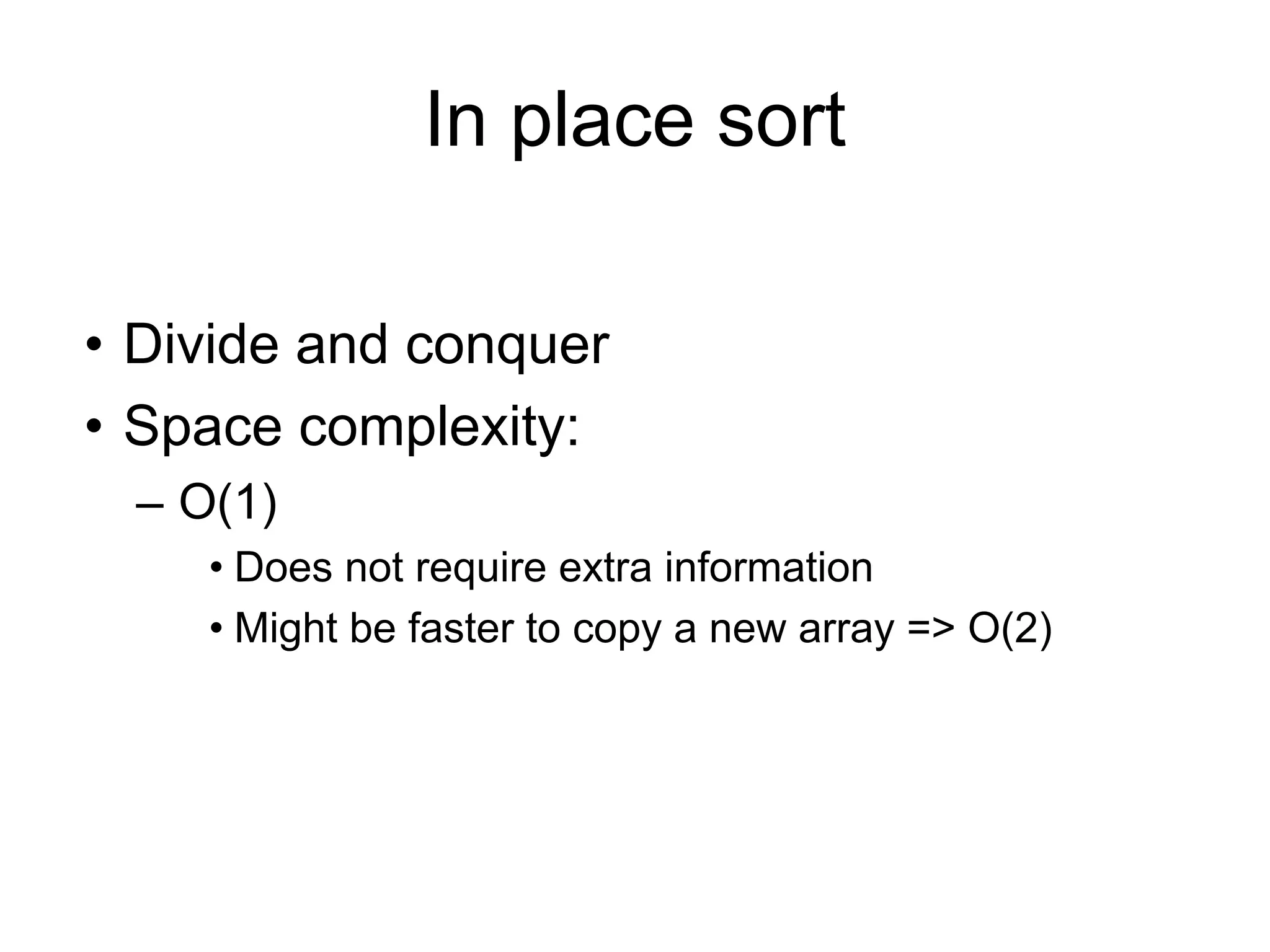

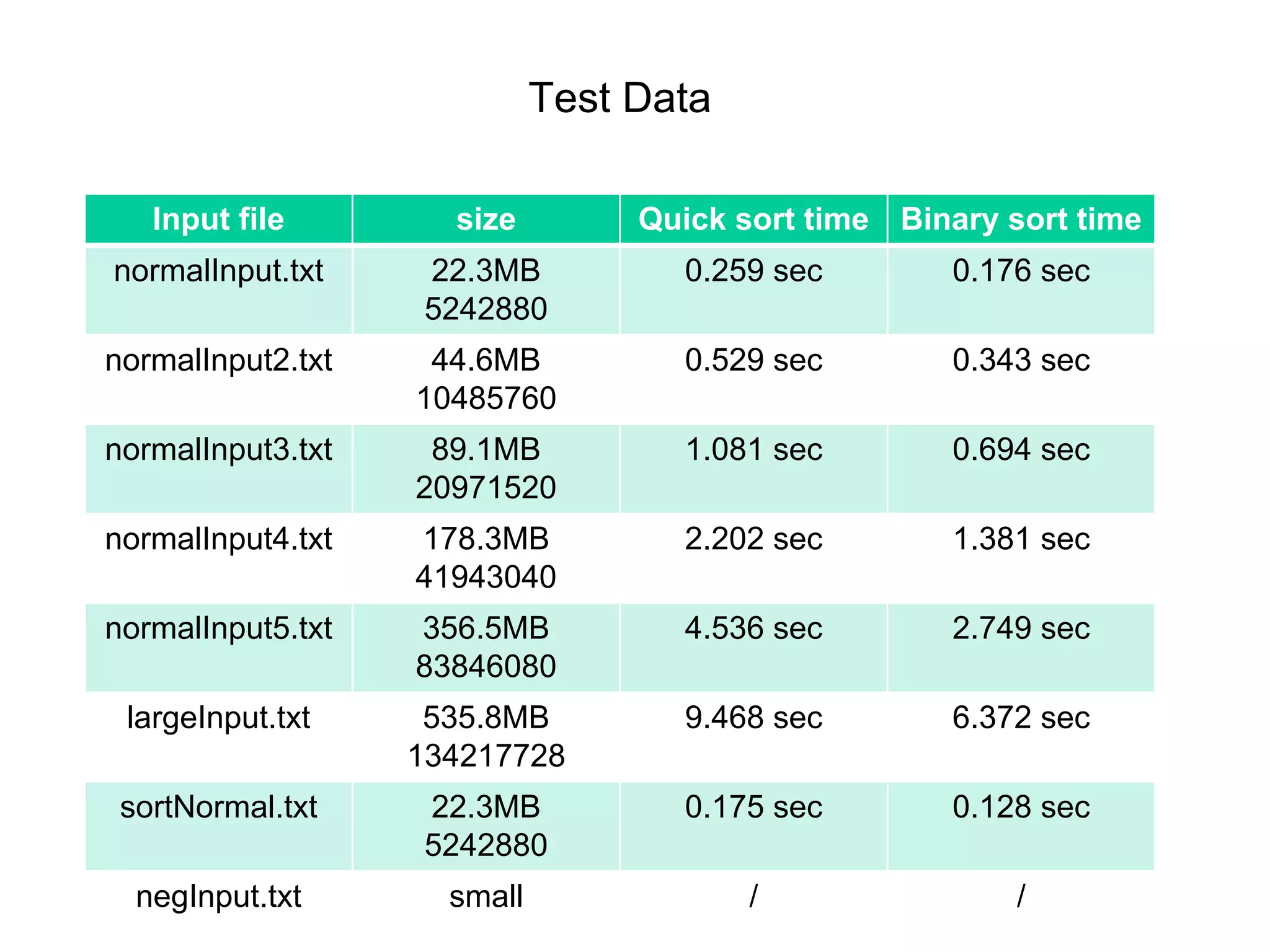
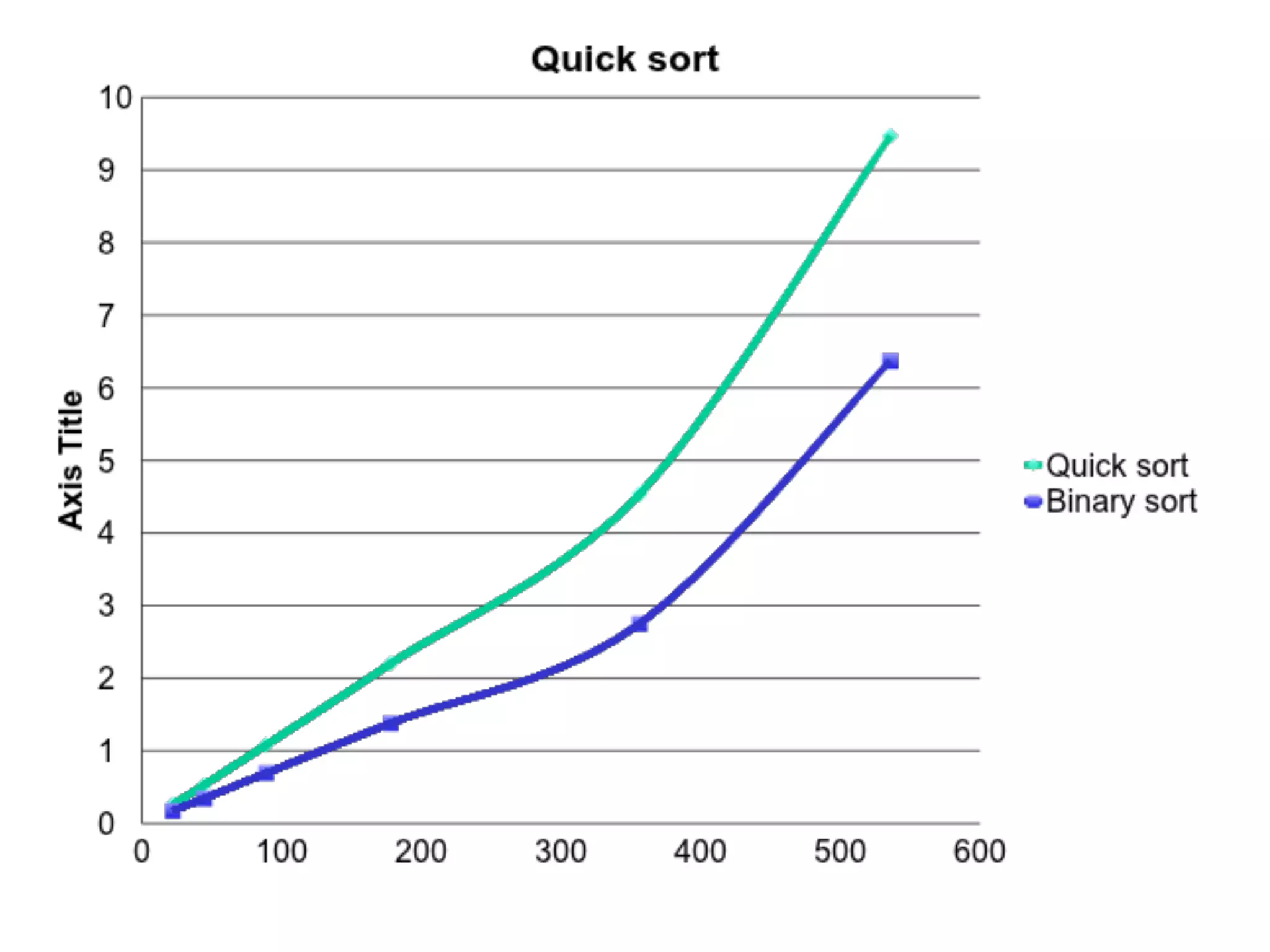

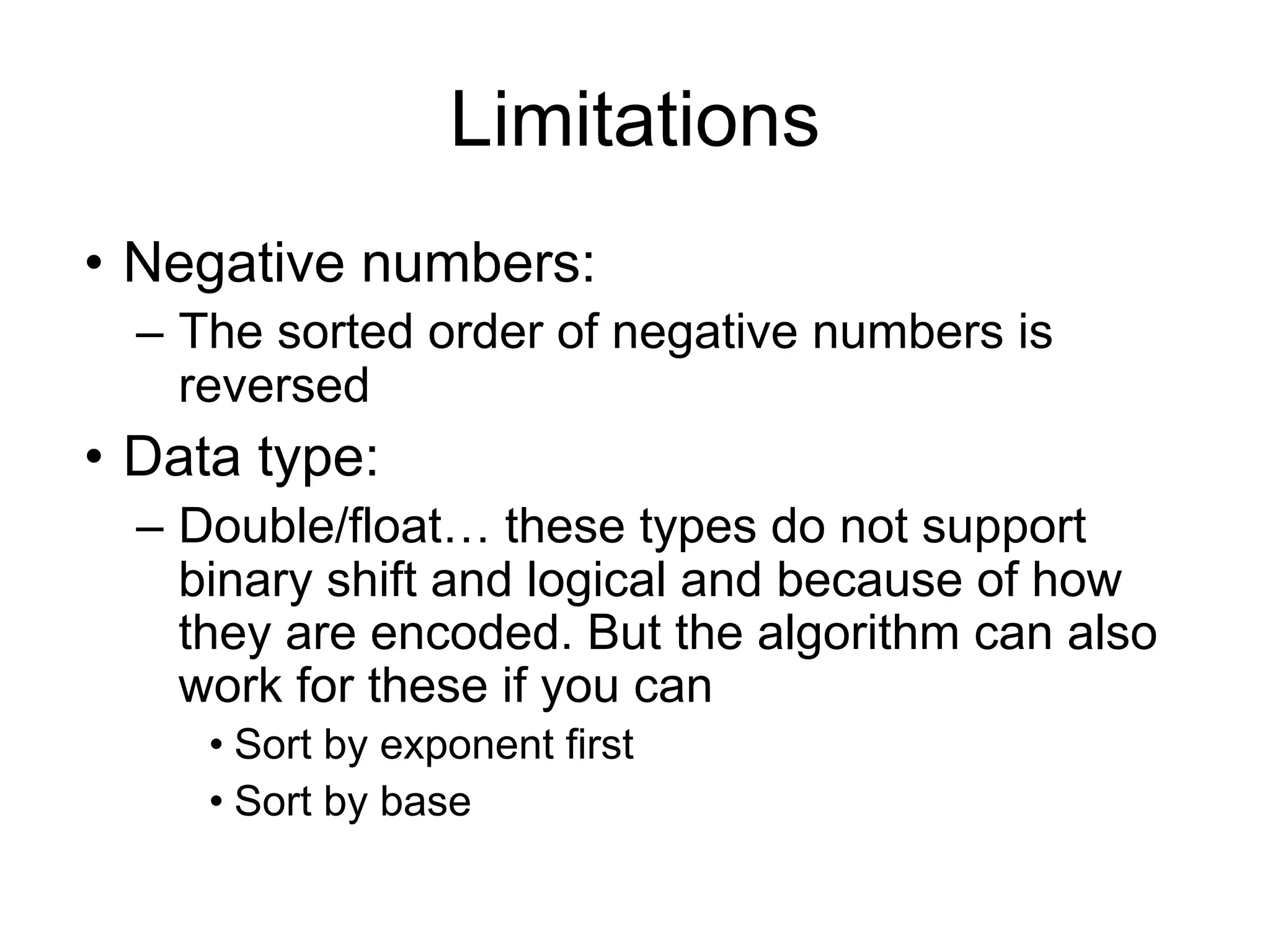
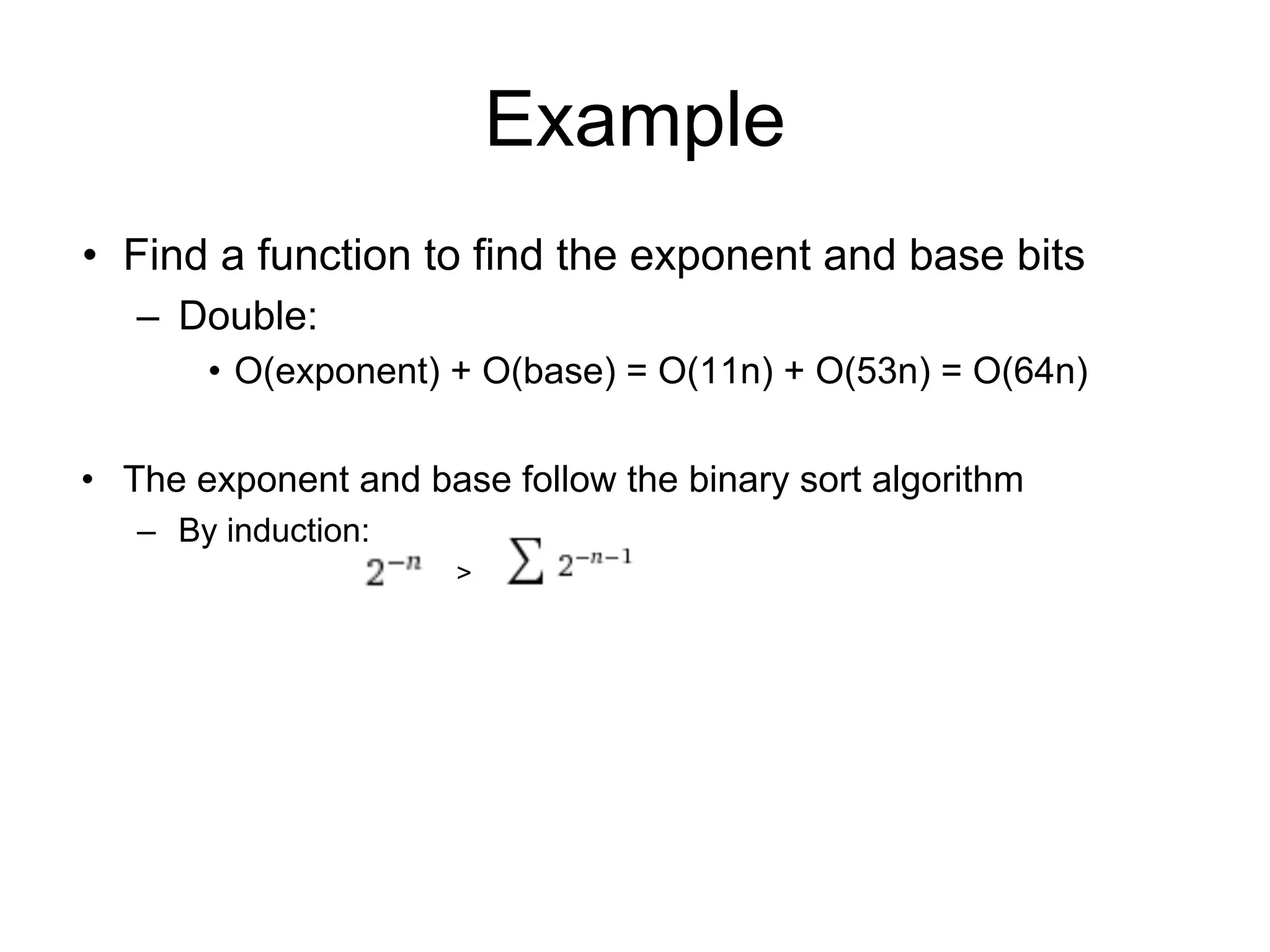
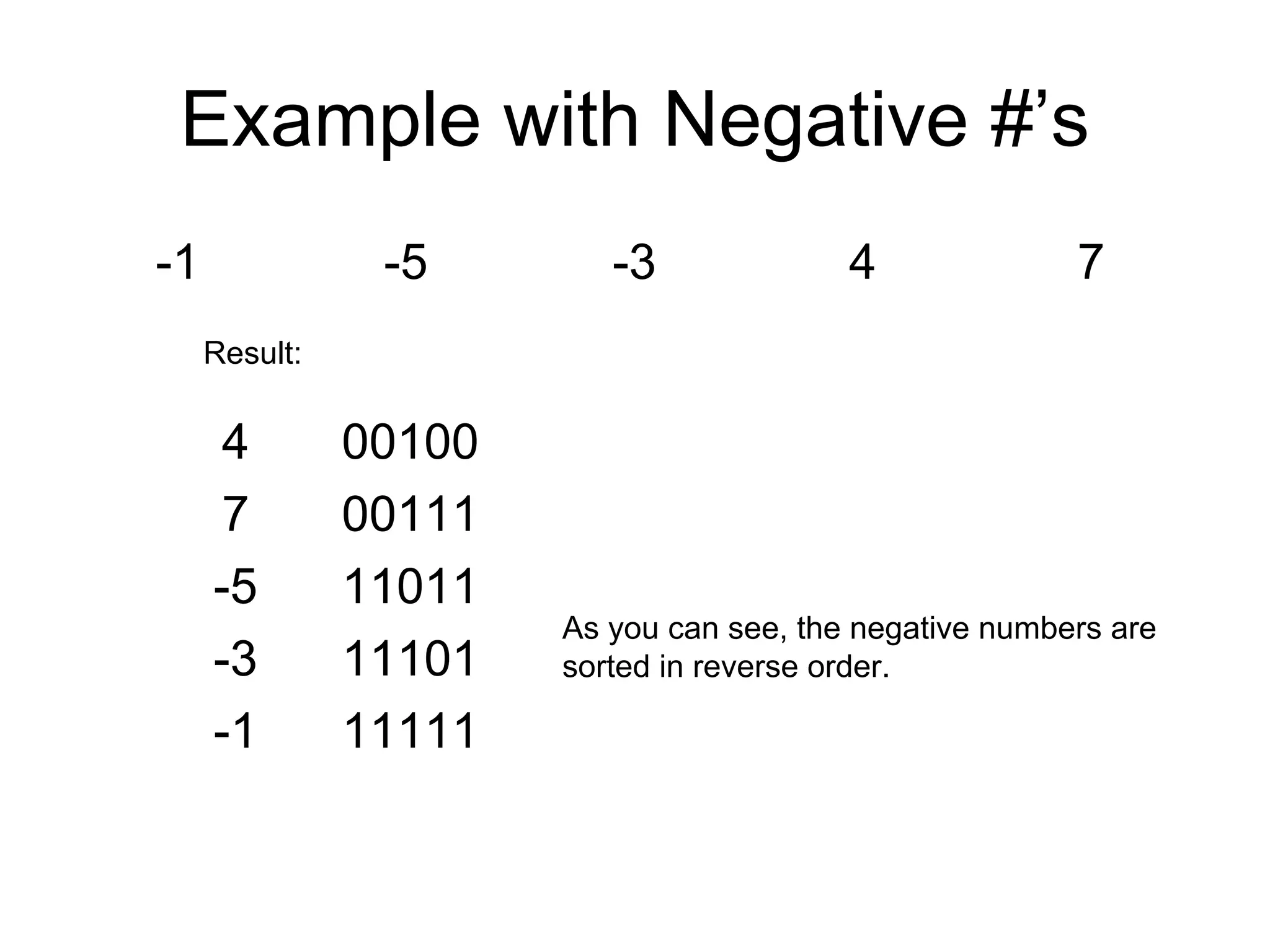
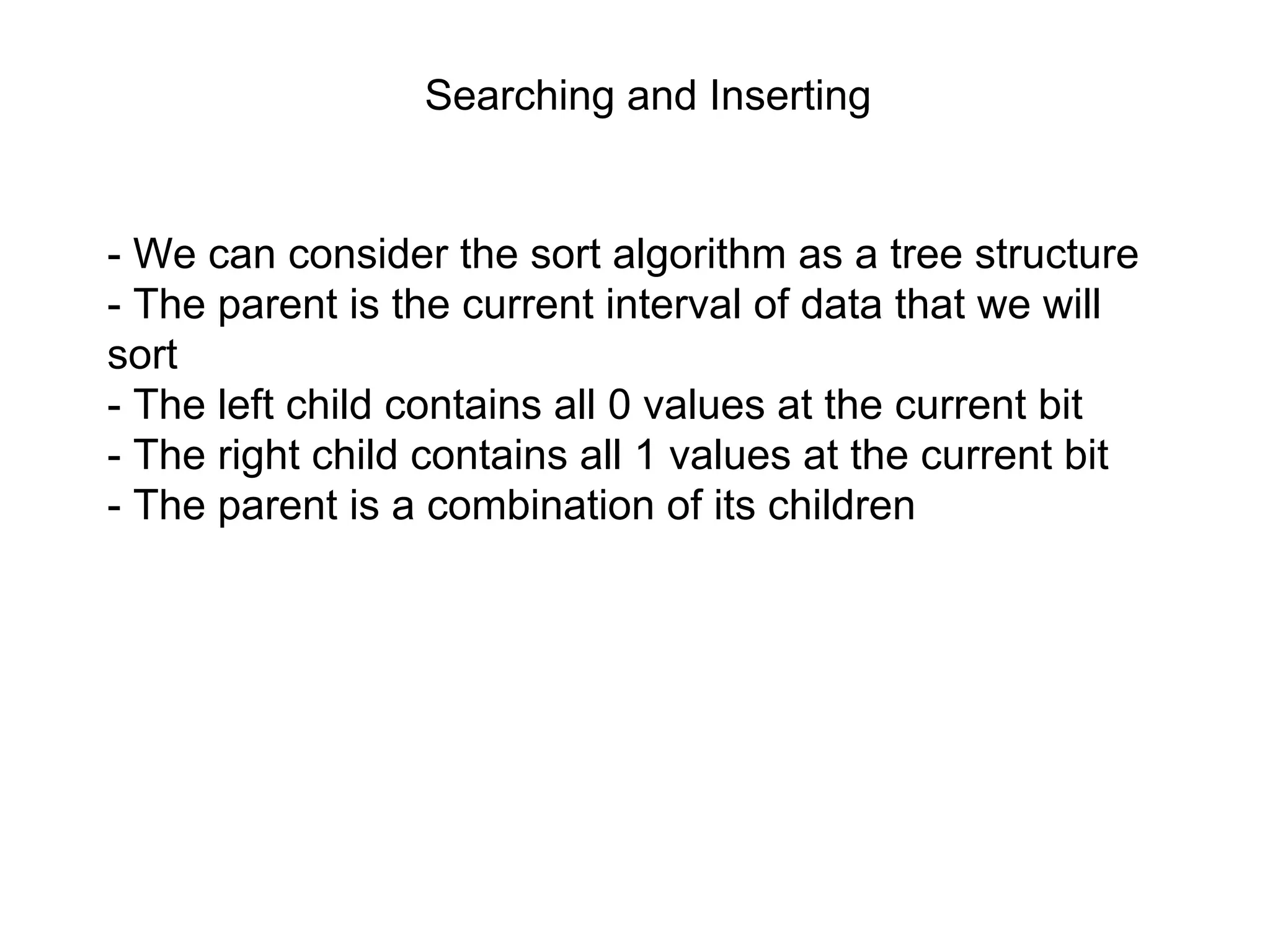
![00
01
10
11
00
01
10
11
00 01 10 11
[0,3
]
[0,1
]
[2,3
]
[0,0
]
[1,1
]
[2,2
]
[3,3
]
00 01 10 11
Index Interval Values at Index
Example of Tree Structure
- To insert/search 2 (which is 10)
Look at node ((2*1 + 1)*2 + 0) = 6
- To insert/search 1 (which is 01)
Look at node ((2*1 + 0)*2 + 1) = 5
Node 1Node 1
Node 3Node 2
Node 4 Node 5 Node 6 Node 7
- Time complexity: O(1)
- Constant!](https://image.slidesharecdn.com/8a2c49a2-d12b-4d9e-ab36-d6d93d832d60-150418184825-conversion-gate02/75/CS375-Presentation-binary-sort-pptx-17-2048.jpg)
